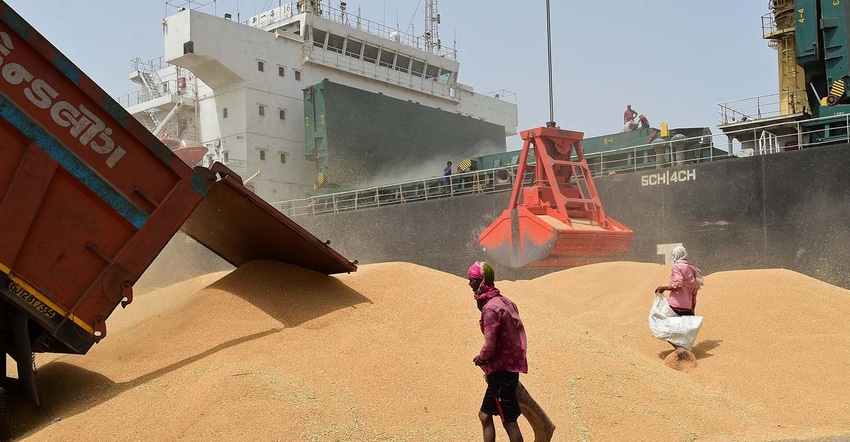
Political statements from India to ban exports of wheat were followed by comments about lifting the ban. And once again, comments today show no intention to lift the ban. This news caused traders to buy, then sell, then only to buy again attributed to wheat market volatility.
Corn and wheat traders also started selling hard on early day Russian statements that they will start Black Sea exports of food (mainly corn and wheat), which caught the markets off guard. However, this was followed by mid-morning clarification that Russian exports would resume out of Ukraine only if sanctions were lifted. (That ain’t gonna happen!)
Again, the selloff quickly started to reverse as buyers sought value. News also came out of Ukraine of damage assessments suggesting export terminals may be out of commission for some time.
Another story started with the announcement by President Biden to support the Indo-Pacific Economic Framework plan that would include 15 trading partners and replace the all-but-defunct Trans-Pacific Partnership. This announcement was followed by China announcing an agreement with Brazil on pseudo sanitary quality export agreements and a phase one pact including 12 commodities including corn.
This pressured markets, however, the Brazilian Chinese agreement would not likely result in any major changes in exports in the next six months. Further analysis also suggests even if China did buy corn from Brazil, total world consumption would not change, and it would just shift other buyers to the U.S. Once the firestorm of selling relinquished, buyers came to the table helping firm the market into the close.
Finally, traders are dealing with the reality check of a messy corn planting season with USDA's intended acres. If the current forecast pans out, the likelihood of 1.5 million acres of corn in North Dakota and Minnesota seems unrealistic. Traders will now go on the hunt to find out if farmers in other states increased corn acres.
A simple query of a few co-ops and their fertilizer sales suggests most producers stuck to the intended rotation. The significance of this is huge. In USDA's supply and demand table, they made three major assumptions:
Demand would 370 million bushels in a year that Grain Consuming Animal Units are higher.
The U.S. will produce a record yield.
ALL of the intended acres will be planted.
None of these assumptions seem likely at this point in time.
End-users seem well bought out for 30 days but any decline in December futures below $7.00 may offer a value point for end users to lock in fall price protection. Fund traders are also likely to maintain a sizable ownership position until summer weather is better known.
Overall, producers should expect a sideways market while travelers text pictures of growing cornfields to their trading friends and statisticians analyze demand, yield potential and total planted acres.
Financial decisions at this point should be based on locking in price on enough bushels to make sure farm operations remain profitable regardless of what happens to yield or price. Thus, it is wise to maintain flexibility of price and delivery. Our weekly video discusses strategy and is available by signing up at Agmarket.Net.
Reach Bill Biedermann at 815-893-7443 or [email protected].
The risk of loss in trading futures and/or options is substantial and each investor and/or trader must consider whether this is a suitable investment. AgMarket.Net is the Farm Division of John Stewart and Associates (JSA) based out of St Joe, MO and all futures and options trades are cleared through ADMIS in Chicago IL. This material has been prepared by an agent of JSA or a third party and is, or is in the nature of, a solicitation. By accepting this communication, you agree that you are an experienced user of the futures markets, capable of making independent trading decisions, and agree that you are not, and will not, rely solely on this communication in making trading decisions. Past performance, whether actual or indicated by simulated historical tests of strategies, is not indicative of future results. Trading information and advice is based on information taken from 3rd party sources that are believed to be reliable. We do not guarantee that such information is accurate or complete and it should not be relied upon as such. Trading advice reflects our good faith judgment at a specific time and is subject to change without notice. There is no guarantee that the advice we give will result in profitable trades. The services provided by JSA may not be available in all jurisdictions. It is possible that the country in which you are a resident prohibits us from opening and maintaining an account for you.
The opinions of the author are not necessarily those of Farm Futures or Farm Progress.
About the Author(s)
You May Also Like






